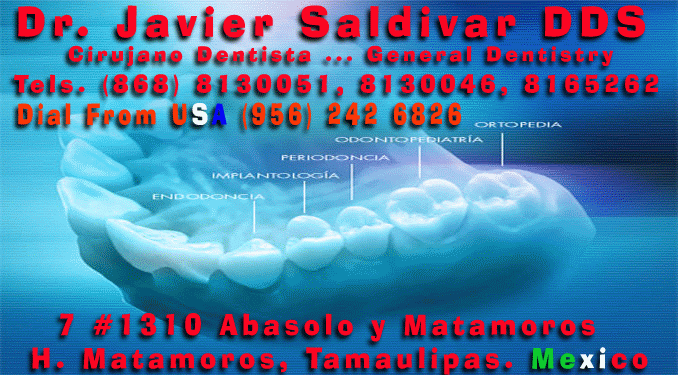



Emergency Care
Care

_______________________________________________________________________________
Our motto regarding emergency care is "immediate if not sooner." We certainly understand the need to contact a dentist in an emergency and therefore we provide same-day appointments for our new or already established patients. You may also e-mail our office with any questions regarding the nature of your emergency.
If you have questions or concerns regarding immediate emergency care due to an accident or trauma situation which may be life endangering to you or others and may include bleeding, broken or lost teeth, please contact the emergency room of your nearest hospital or call the 911 emergency medical system number.
A Few Tips to Consider Regarding Pain
Of course it is more prudent to prevent than to treat therefore taking care of tooth chips, fallen fillings and bleeding gums immediately is of primary importance. Most broken fillings and teeth are not painful when they first occur, but many can become infected after a fracture. Bleeding gums are equally painless until the damage involves the bone or infection sets in. Postponing the repair of a broken tooth or a bleeding gum will eventually become painful particularly when the soft tissue (nerve, bone) gets involved.
Be sure to take care of the cause of pain as soon as it occurs. Pain medications can relieve pain for a period of time but do not control infection or inflammation. If left untreated there is a chance that the pain can lead to further pain if the infection or inflammation continues to increase. Be sure to visit your dentist.
Pain comes from two sources :
1) damage caused to the nerve endings of the damaged tissues.
2) inflammatory cells rushing to the damaged area cause pressure pain due to swelling.
Infection is notorious for producing swelling to the the body. Ice is used primarily to prevent swelling after surgical intervention. It is also excellent as a short-term remedy when applied externally to an aching tooth or a damaged
lip.
-ILLUSTRATION OF AN ICE PACK AND HOW TO RAP IT IN A TOWEL-

An Ice Pack properly put inside of a towel
Any type of Ice Pack will work when properly applied

ILLUSTRATION OF ICE PACK PLACEMENT
-The Ice Pack should be placed softly where the pain exists -
Tips For Using Ice
If you are experiencing some pain and cannot reach a dentist try the use of ice as it may help relieve pain and swelling. When ice is applied it slows circulation in or around the area the ice is applied to.
External Use Only
1) Crushed ice in a plastic bag works best for it adapts to the covered area more adequately.
2) Apply to the affected area in an on-off cycle; 10 minutes on, 5 minutes off.
3) Plan to use ice for at least one hour at a time for expected results.
4) Expect an increase in pain sensation at the onset. Ice is not a direct pain-reducer. It needs time, approximately one half hour to reduce circulation activity in an area.
5) An excellent alternative to an ice bag is a package of frozen peas in a plastic bag. Shake the bag in an effort to loosen the peas from each other.
6) Use of a towel or cloth wrapped around the ice bag to form a handle will prevent burning of the skin on the hand or face as well as allowing the ice application for a longer period.
Pain Killers
As previously stated pain is caused by either tissue damage through trauma or infection. Pain killers, both over-the counter and prescription medications, work on a buffering system that allows a certain amount of medication to be released at a time.
TIP***
Often, by dissolving an over-the counter medication (i.e. Advil, Extra-Strength Tylenol, etc.) in a small amount of water or even chewing it into very small pieces (tastes bad but is well worth it) will speed the relief of pain by speeding the absorption of the medication. CAUTION: Speeding up the absorption of the medication may require less medication BUT may also increase stomach intolerance or allergic reactions for patients that may be allergic or intolerant to such medications.
BLEEDING:
Non Surgical Bleeding:
Bleeding must be attended to immediately as bleeding from gum problems will not be resolved through the use of home remedies. While there may be no pain while bleeding, this does not make it less of a problem.
After Surgery Bleeding:
1) Keeping the surgical area cool by applying ice externally will decrease the chances of bleeding after surgery.
2) Diminishing movement for the first 24 hours after surgery will decrease the chances of bleeding after surgery.
3) SMOKING - Smoking will increase the bleeding and pain and the possibility of Dry Socket.
4) Certain Pre-surgical medical conditions (diabetes, pregnancy, high blood pressure, etc. will increase bleeding after
surgery.
E-MAIL:
![]() drjaviersaldivar@hotmail.com
drjaviersaldivar@hotmail.com

home
Copyright © 2015 Dr.Javier Saldivar V. All Rights Reserved.
Reproduction or
republication strictly prohibited without prior written permission.

